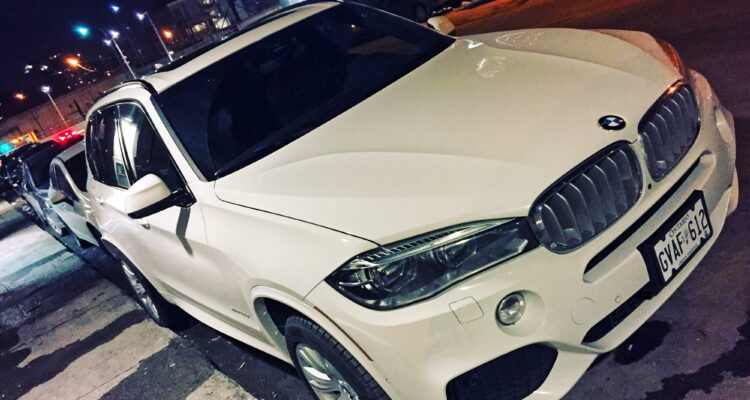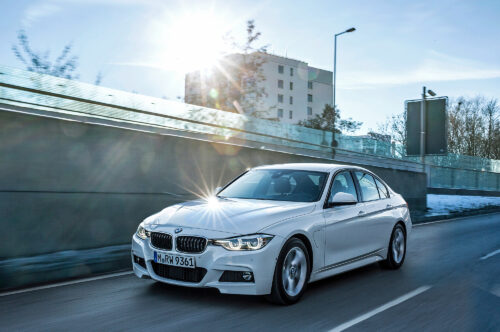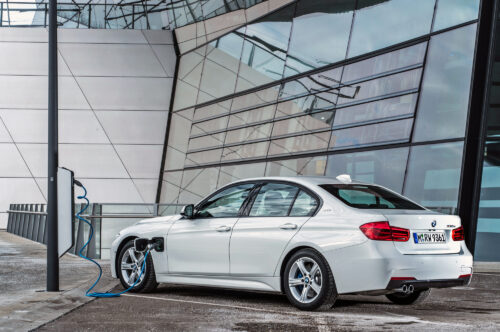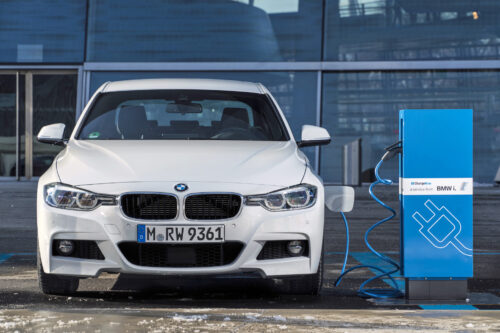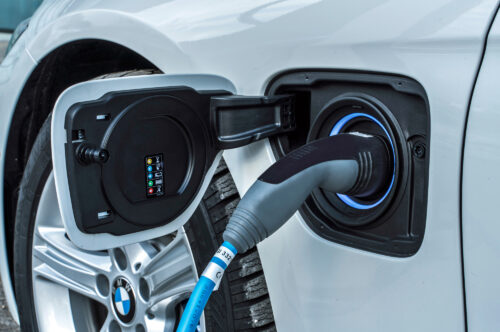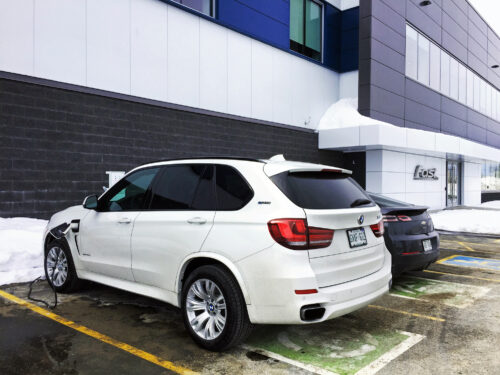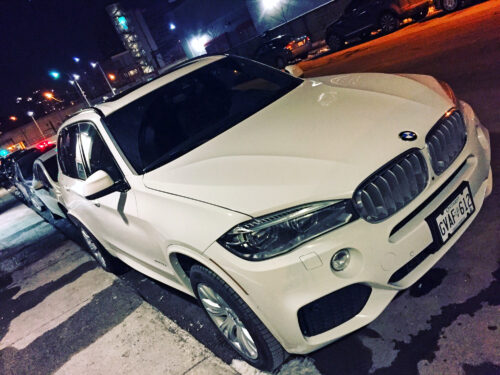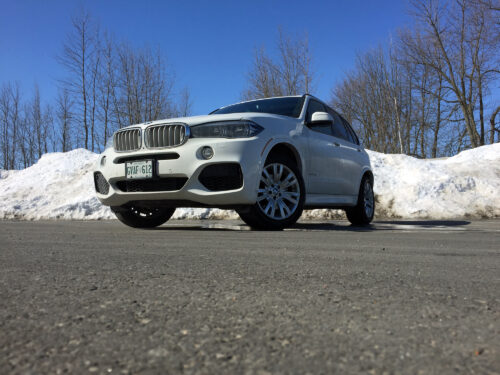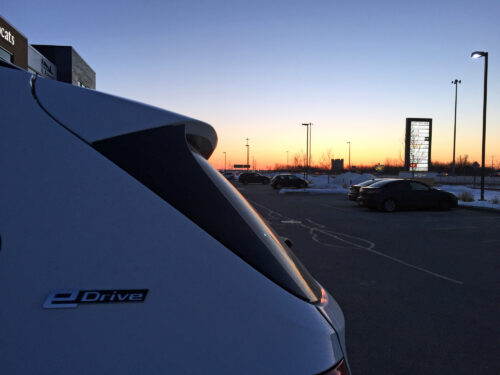Ah, the EV life.
I’ve tried really hard to embrace it, I promise I have. I’ve driven Teslas and Volts and Prius’ (Prii?), and I just can’t do it. I just can’t. I understand (on some level) the need for a change, truly I do. And a good friend, my boss, and Tesla Model 3 soon-to-be owner tries to pound it into my thick petrol-head skull whenever he can: The need for change is NOW.
Sigh.
But I don’t wanna be an EV driver!
Well, I’ll admit I was ever so slightly swayed into the greener side of life when I had the chance to drive no one, but two BMW e vehicles: the 330e sedan and the larger X5 40e SUV. Essentially, both are regular, run of the mill 3 Series and X5 models, however, each one packs a bit of a trick up its sleeve with the ability to run on full EV in certain situations and the ability to plug in in order to charge it up when needed.
With all the dynamism you’d hope from a BMW, the e-cars offer that environmental oomph, and I was actually rather impressed with one in terms of EV driving time and overall gas mileage (the other, not so much).
2017 BMW 330e
Let’s start with the basics: At its core, this is a normal 3 Series. It’s middle of the pack in terms of equipment and styling, with an interior we’ve all come to know and (mostly) love from the Bavarian automaker. iDrive is there, as are comfortable seats and a decent amount of room in the rear. Despite the battery on board, not much interior space is lost (you only lose 100 litres of cargo space in the trunk in the 330e vs a regular 3 Series).
Besides a nifty blue bar beneath the tachometer, and an “eDrive” badge in the gauge cluster, there’d be very little else to give away the fact that this Bimmer features a sophisticated plug-in hybrid system that could, potentially, help you save a few dollars at the pumps.
Let’s start with the electric-only range on the BMW 330e, shall we? Here’s the thing with plug-in hybrids: They sound like a great idea, and a lot of people might equate them to performing just as the Chevrolet Volt does, after all the Volt has a battery that can be plugged in to charge and can also run on gas. Here’s the difference: The Volt uses its gas-powered generator to power the electric motor that always provides energy to the wheels. The BMW 330e on the other hand simply uses the lithium ion battery as an enhancement for the gasoline engine that primarily powers the wheels, and can also run solely on electric power for short jaunts.
How short? On a full charge I was able to squeeze roughly 20km on full electric power. Keep in mind that that was on residential streets, no highway. On the highway, the 330e will stay in EV mode up to speeds of about 100km/hr as long as throttle engagement isn’t too extreme or strong, and of course given there’s enough of a charge to cover the power needed to maintain full speed requested.
Thankfully, I have access to a Level 2 charging port during the day, which meant my 330e was fully charged just after midday, each day. And because I live so close to the office, (about 10km each way) I was able to drive on battery power alone, all week.
Driving a luxury vehicle that’s going to cost you absolutely nothing in gas (provided you have the right charging equipment to ensure a full charge when needed) is a huge draw towards a 330e purchase, there’s no doubt. However, when the price is considered ($52,550 base MSRP) over a base 3 Series ($10k cheaper), the decision becomes less clear-cut.
Let’s look at power for a second, since the design and amenities inside the 330e and a base 320i are essentially the same (but also keep in mind you get AWD with the 320i, which you don’t in the 330e). Both sport the same 4-cylinder mill that pushes out 180 horsepower. The 330e produces slightly more torque at 215 lb-ft over the 320i’s 200, but not much. Of course, add in the 5.7kWh battery power and the 330e’s combined power climbs to 310 horsepower and 248 lb-ft of torque.
Is it a noticeable boost over the non-PHEV 3 Series? Only slightly. Of course, the beauty of electric power is the linear and immediate power boost, which is definitely beneficial when it comes to highway passing and when short bursts of power are needed. But is it really worth the extra dollars?
I wasn’t so convinced…
2017 BMW X5 40e
Then I got to drive BMW’s biggest SUV in PHEV guise, like the 330e. I’ve driven my fair share of X5s over the years from the basic right up to the X5M, and I’ve always quite liked the big Bavarian brute. This latest generation got a facelift and some interior tweaks, including an updated iDrive system, and an all-new PHEV model, the 40e.
Just like the 3 Series, this plug-in hybrid version looks and drives the same as a non-PHEV version. The only giveaways are the “eDrive” decals on the rear pillars, and in the gauge cluster. The X5 40e sports a 9.2kWh lithium ion battery that, on a full charge, took me roughly 25km on full battery power only. BMW claims it can do up to 40km on battery only, but I wasn’t able to travel that far without the engine kicking in.
Of note; the gas engine was much more easily engaged during day-to-day driving in the X5 than it was in the 330e. I think perhaps the sheer weight difference between the two caused this difference. I found it a bit obnoxious that it was constantly switching back and forth, and while there is a “max EV mode” that can be engaged, which should put the vehicle in full electric mode no matter what, obviously the car still takes charge and will start the gas engine when it sees fit (read: when the throttle is pushed excessively or highway speeds are too great).
At the end of my week with the 2017 X5 40e my gas mileage averaged 10.7L/100km. Unlike the 330e, I found myself using gas on my morning commutes to work since I don’t have the luxury of plugging in at night (ah, the joys of communal living and assigned outdoor spots). Did I find this fuel number impressive? Not particularly so. Yes, it could have been much higher given the size of the X5, so the electric-only drive times definitely helped, but in all I still had to fill the rather large tank at the end of the week…. And with premium, no less.
Driving the BMW X5 40e is just like driving any other X5. One of the sportier SUVS out there, the 40e is quick and nimble despite its large proportions. And I’m living proof that it is also completely possible to get a speeding ticket in a PHEV. Yup. Thanks to the 241-horsepower inline 4-cylnder engine coupled to the 8-speed transmission, the X5 40e is almost deceptively sporty, and you can definitely reach ticket-worthy speeds quickly (and without realizing).
If I were in the market for an X5 suddenly, but didn’t want the full gas-guzzling experience, I’d spend $5k less and get the X5 35d (d for diesel, of course). With more horsepower, more torque, the same exterior look and interior space, the diesel offers up more oomph for the dollars put towards it, in my opinion.
eDrive – worth it?
I can see the allure of owning a plug-in hybrid, truly I can. Especially when that option is in a luxury package that’s also pleasant to drive. BMW’s slogan of “dynamic driving machines” isn’t lost on its eDrive products. But do I think they’re worth the extra money?
I’m still not sure. The 330e offered a much more convincing overall package to me than the X5. Because I was able to, essentially, drive the entire week on battery only (and basically the gas engine all weekend), it did indeed save me on gas a great deal. But that was also because I had access to a supercharge station every day. The X5 was not as practical, despite the daily supercharge station. I don’t think it’s worth the eDrive premium over a diesel or gas-only X5, in my opinion.
EVs are the future, I see that. And systems like BMW’s eDrive are a fantastic directional change and a great way to introduce the general public to living life in the electric lane. I really am all for that, but if you’re going to go EV I say go all the way or don’t bother … which is why shortly after those two I got my hands on a BMW i3 …



